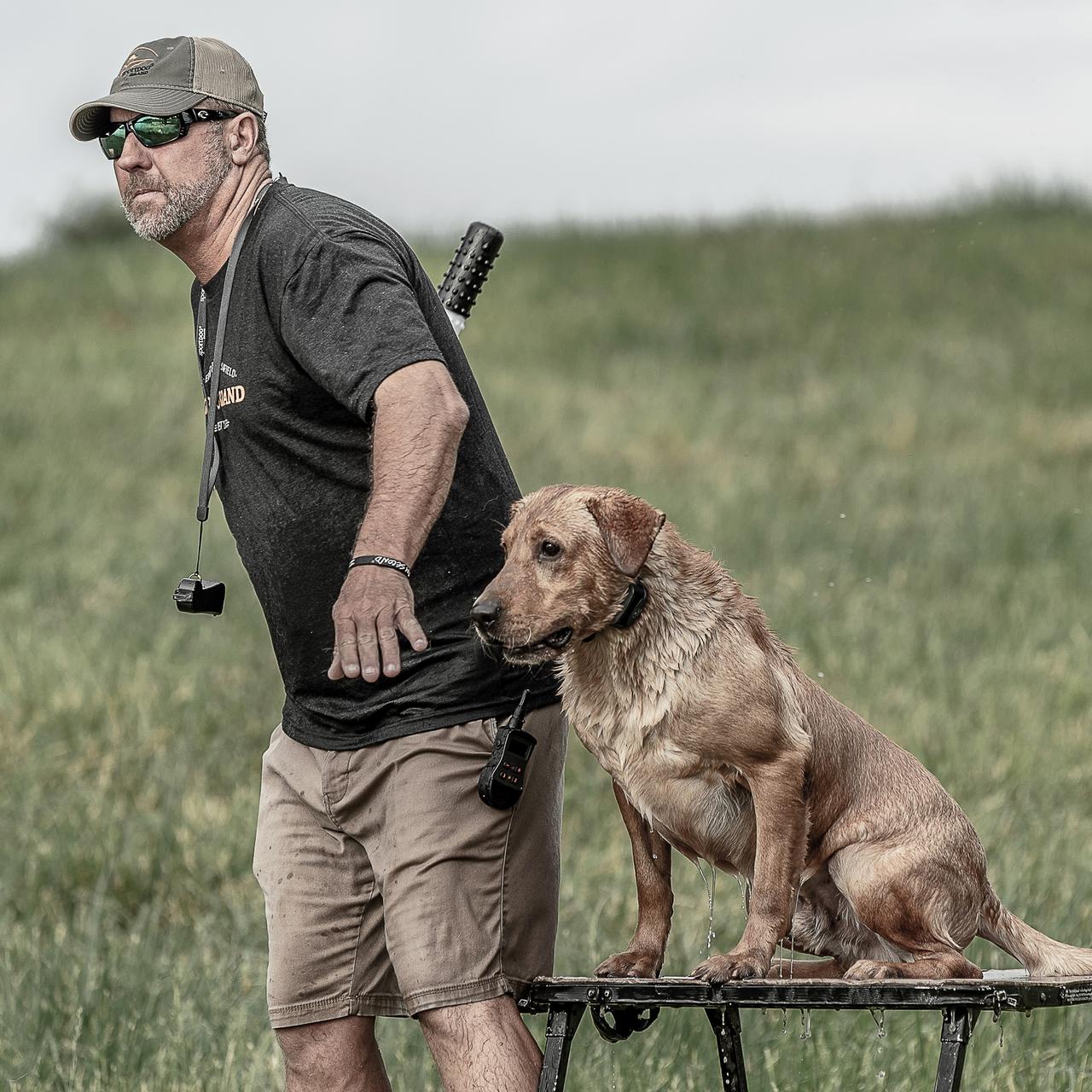
Making the Case for E-Collar Simplicity
Posted by Chris AkinDepending on where you're from, your thoughts on using an electronic training collar probably slot into one of three categories: 1) You reckon the modern e-collar is the best thing since sliced bread; 2) You reckon the nasty 'shock' collar shouldn't be anywhere near dog training; or 3) You're scared to use an e-collar because all you've heard or read about it is how tricky they are and you're worried you'll stuff up your dog.
Because you’re reading this on the SportDOG Brand website, you won’t be surprised when I tell you that I belong to the first category. I’m all-in on the use of the modern e-collar because of its many benefits.
With that said, the fact that I’m a professional trainer doesn’t mean I use some sort of secret system that requires a Master’s degree to understand when it comes to applying the e-collar in my training and hunting routines. Just because the e-collar is a great tool doesn’t mean it has to be complicated.
However, I reckon there are too many folks who grab an e-collar transmitter for the first time and press the button expecting an experience on par with sending a spaceship to Mars. It's just not like that. Instead, it's a simple piece of gear. I advise beginners to think of the e-collar the same way they think of an extended lead, and we all know there's nothing tricky about controlling your dog with a lead.
When I'm putting on a demo or workshop, I wanna convince folks they shouldn't be scared to press a transmitter button. What usually happens is once they get that an e-collar is just reinforcing what a dog's already learnt and that an e-collar speeds up the training process, that's when the light bulb goes on and they get keen on it.
Used properly, an e-collar is not about punishment. The low-level correction levels available on every modern e-collar mean you can communicate with your dog, thereby speeding up the learning process during training.
If I was in a debate and challenged to further make a case for the e-collar, I'd bring up this point: Think about how many dog's lives have probably been saved because it provided control that we never used to have.
Consider this scenario and ask how many times something like this has likely played out over the years:
- You're out the front yakkin' with your mate next door. Your dog's just doin' dog stuff. He's runnin' about, havin' a sniff of the lawn, lookin' for his toy and just generally bein' a larrikin. Then he spots a kid ridin' his bike on the footpath across the road. Bein' sociable, off he shoots to say g'day and that's when a car comes belting down the street. You give your dog a sharp 'Here!' but he keeps goin', headin' straight for a prang. Right at that tick, you've got the chance to nudge him with the collar and make him stop and come back, dodging what could've turned into a real nasty day for both you and your dog.
Dangerous situations are everywhere. The threat could be a brown snake when you're out bush. It could be an echidna getting ready to stuff up your quail hunting trip. These and heaps of other things that range from a hassle to deadly can all be managed if you've trained your dog to respond to e-collar stimulation.
Even if you never use the e-collar for anything but emergencies, it’s worth having. Of course, as I said earlier, using it to reinforce commands such as 'here' and 'heel' feels like nothing short of a modern miracle when you see the results.
Need a longer lead? Use an e-collar. It doesn’t get much simpler than that.

Chris Akin
Jonesboro, AR
Chris has spent most of his life duck hunting or training in the field. Over the years, his program evolved into one of the most accomplished hunt test programs in the country. Webb Footed Kennels, Inc. has produced more than 350 Hunting Retriever Champions, 175 Master Hunters, and 35 Grand...
Related Products

